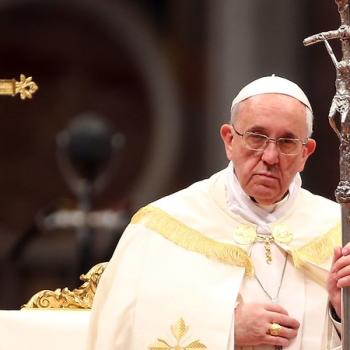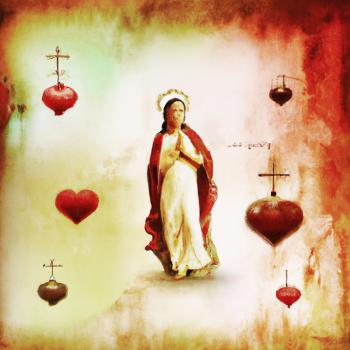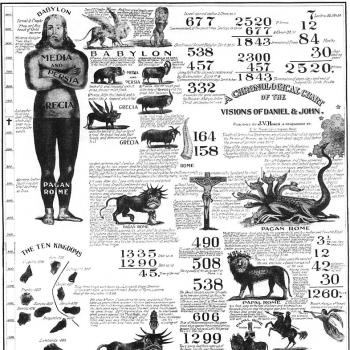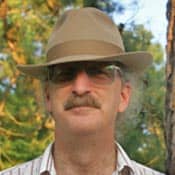I help with the staging of a large harp concert every December. It's a nice event; the music is excellent, and the women are dressed in gowns such as one doesn't often get to see anymore. There is a potluck party at someone's home afterward, where everyone in the concert and their families are invited.
A couple of years ago, someone brought a grandfather, much advanced in age, to the party. Everyone was polite and said hello to him, but his English wasn't too good, and he was mostly interested in nodding off in a corner of the sofa anyway, apparently content to be forgotten for the time.
Our hosts for the evening were Jewish, and the evening of the party was during Hanukkah. While everyone was standing around chatting with a paper plate in hand, our hosts asked us for a quiet moment while they lit the candles in their menorah. Several people in attendance were Jewish, and even some people who I know are not Jewish knew the Hebrew chant that goes with the lighting of the candles.
If I hadn't been standing where I was, I would have missed something important during the chant: the old man sitting there who appeared to be asleep on the sofa. His mouth was moving. I couldn't tell if his voice was engaged, but it didn't matter. His lips were synchronized to the words spoken by the others. I saw his eyes open briefly under his wrinkled brow. He glanced around, even seemed a little surprised. By the time the chant was done, his eyes were closed again. The lips stopped. The head nodded down. I wondered how many decades he had been saying that chant. At least eight. Maybe nine. It was the only thing at that party he cared to be involved in. I doubt very much that he had to work at remembering the words. How many thousand of years have he and his ancestors been reciting them now?
We Heathens also have an indisputably ancient tradition. But while Abrahamic scholars can make credible arguments about continuity, we can only see the workings of our ancestors across remote chasms filled with fog. Our tradition fell into folklore and a small stack of poorly preserved sheepskins before being revived. The major features of the Heathen gods are clear enough that non-Heathens often recognize them readily, but descriptions of how Germanic and Scandinavian people interacted with them even a thousand years ago have largely been lost.
Within our community, one species of thought is Reconstructionism, which has several subspecies. The Hard Reconstructionists work only with aspects of our religion that can be supported by bona fide historical references in texts of unquestionable origin. This viewpoint is easy to appreciate, and also easy to defend against non-Heathens who say that we're just making all this up as we go along.
The problem with the Hard Recon position is that there really isn't much to go on. When putting together a shared ritual for a Heathen gathering, what is there to do? And is that enough?
Ásatrú/Heathenry really came out into the open again in the 1970s. Sometime between then and now, the Hammer Rite appeared. This is used at the beginning of many a Thorsblót, and at other events, too. In English, it goes like this, performed with a strong voice and a good hammer:
Hammer in the North! Hallow and Hold this Holy Stead!
Hammer in the East! Hallow and Hold this Holy Stead!
Hammer in the South! Hallow and Hold this Holy Stead!
Hammer in the West! Hallow and Hold this Holy Stead!
In Norse, it goes something like this (I am unfortunately no expert in Norse. I got this from a source I trust, but feel free to correct me if I have it wrong.):
Hamar i Norðri, Helga ve þetta, hindra alla illska, ok hald vard.
Etc.
Whether in English or in Norse, this is the first public Heathen rite I ever heard, after thinking for a long time that I was the only one who still took the gods of the North seriously. The words and the working were new to me, but my heart heard it clearly then. It still does.
There is one problem with the Hammer Rite: it has no basis in history. The usual story, which might even be true, is that it is a reworking of a Wiccan practice known as Quarter Calling. The Wiccans had a few decades' head start on us in their rituals. Some prominent early Heathens spent time in Wicca before, and the structural similarity in the rites is hard to miss. For some people, this putative origin renders the rite toxic. A Hard Recon friend asked just last weekend, "You're not still doing the Hammer Rite, are you?"





